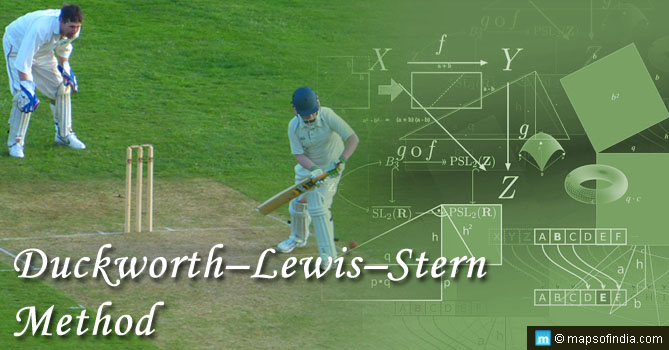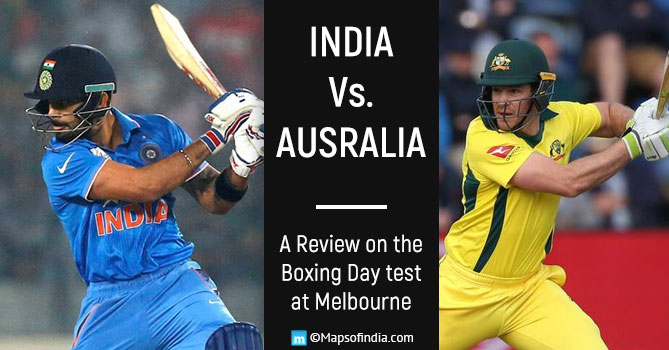
Every time rain interrupted a crucial game in the recently concluded ICC Cricket World Cup 2019, and one or both the teams did not get their full quota of 50 overs to bat, the game had to be decided in the remaining time window available to play. Sometimes, the teams got a chance to resume play the next day. Otherwise, ICC had to proceed with the Duckworth Lewis System (DLS).
Duckworth Lewis System (now known as Duckworth–Lewis–Stern method since November 2014) is a mathematical formulation designed for calculating the target score of a cricket team that is going to chase a score in a limited over game. This formulation is used only when a cricket match is interrupted by rain, weather or other circumstances.
Two English statisticians named Frank Duckworth and Tony Lewis devised this mathematical formulation. While this formulation was first introduced on January 1, 1997 (during the 2nd match in the Zimbabwe-England One-Day International Series), ICC officially adopted it in 1999.
Professor Steven Stern became the custodian of this mathematical formulation after he added that the second team batting must start their innings with a higher scoring rate while chasing high run targets than keeping wickets in hand.
Why was Duckworth Lewis System Created?
Limited over cricket games always faced the problem of calculating a fair chasing score for the teams that are batting second. Two common methods were followed. While one was the Average Run Rate method, the other was the Most Productive Overs method. Both these methods produced new target scores that were unfair and one of the teams could easily exploit them to its advantage, thereby entirely altering the course of the game.
– The Average Run Rate method took into account the pace at which a team is scoring (at the time the cricket match was interrupted). It didn’t take into account the number of wickets that were lost. If a team feels that the match could be interrupted by rain then it can accelerate the run rate, even risking its wickets. This would skew the comparison with respect to the first team.
– The Most Productive Overs method also was unfair in the sense that it also didn’t take into account the number of wickets lost by the team chasing the score. This system actually penalized the second team batting for good bowling. While setting the revised target, this system essentially ignored their best overs.
Though these methods were used until the 1990s, one World Cup match changed the course of history and the demand for an alternative method became stronger. The match was between England and South Africa in the 1992 Cricket World Cup. The rain stopped the game for just 12 minutes, at a time when South Africa needed 22 runs from 13 balls. It was a competitive scenario. However, after applying the Most Productive Overs method, the revised target for the South African team became 21 runs from just 1 ball (a virtually impossible feat). The outrage following that match triggered Duckworth and Lewis to come up with a better mathematical formulation.
Why is Duckworth–Lewis–Stern Method a Better Method of Calculation?
Duckworth–Lewis–Stern method is better than both Most Productive Overs method and Average Run Rate method because it keeps the difficulty of achieving the target for the second team’s innings at the same level as the original target. If the DLS method was applied to that England-South Africa match of 1992 Cricket World Cup, it would have required South Africa to score 4 runs for a tie and 5 runs to win the match from the final ball.
The basic principle followed by the DLS method in a limited-over match is that it takes 2 resources into account (number of overs to play and the remaining number of wickets) for calculating the target score for the second team batting. The target score gets proportionally adjusted with respect to the changes in these two resources.
Has DLS System ever created any Controversial Outcome?
Yes, Indian fans are not happy with the Duckworth–Lewis–Stern method because they feel during a Twenty20 international match between India and Australia in November 2018, the latter unfairly won the match by 4 runs.
During the match, Australia scored 158/4 in 17 overs. As the rain stopped the match, the DLS method was used and the revised target became 174. India chased but was able to score 169, 5 runs short than the revised target of 174. However, 169 was definitely 11 runs more than the original score of 158. The scorecard definitely looked weird because India scored 11 runs more than Australia’s original score but still lost the game by 5 runs. Indian fans were not at all happy with the DLS system.
Is there any Alternative to Duckworth Lewis Stern System?
Yes, an alternative system was proposed by an Indian statistician named V Jayadevan, which is known as VJD System. Many experts believe it is a better alternative to the DLS method.
It is based on two curves. While the first curve depicts the pattern of the “normal” run getting (i.e. when there is no interruption), the second curve (also called the target curve) indicates how the batting side should accelerate after an interruption is caused.
The normal curve considers the percentage of wickets lost as well as the percentage of overs played. The target curve used for setting the revised scoring target considers the percentage of overs that are being played. They say that the new version of the VJD method is more responsive than the DLS system and therefore provides superior output.





